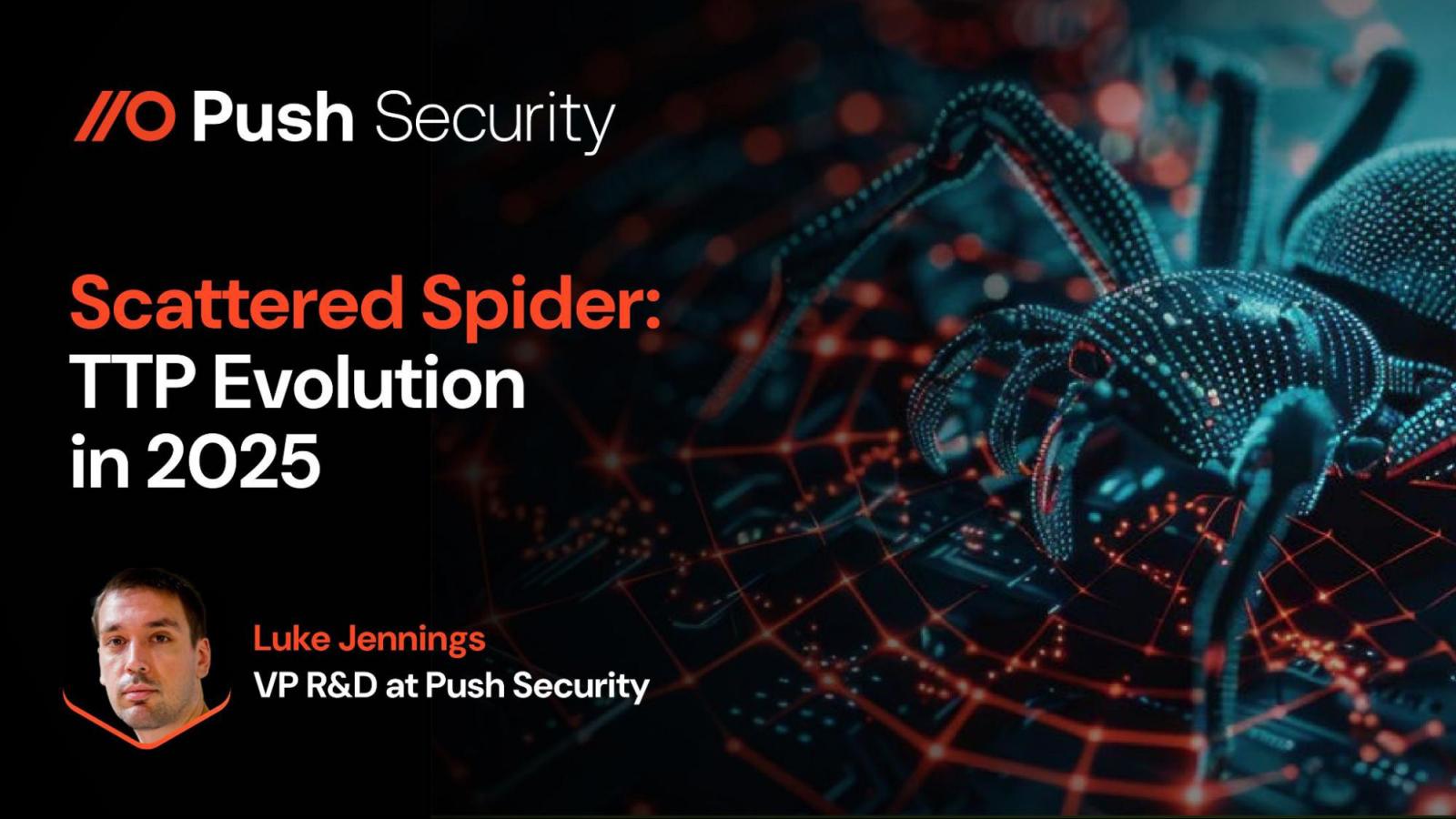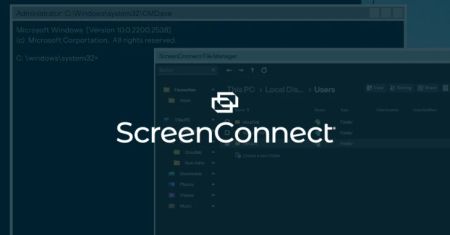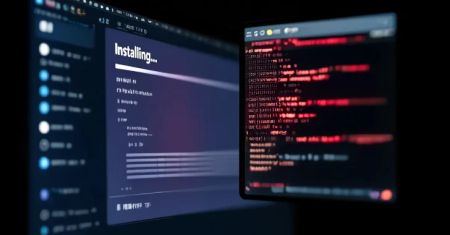Scattered Spider: Three things the news doesn’t tell youWant to know more about Scattered Spider?

With the recent attacks on UK retailers Marks & Spencer and Co-op, so-called Scattered Spider has been all over the media, with coverage spilling over into the mainstream news due to the severity of the disruption — currently looking like hundreds of millions in lost profits for M&S alone.
This coverage is extremely valuable for the cyber security community as it raises awareness of the battles that security teams are fighting every day. But it’s also created a lot of noise that can make it tricky to understand the big picture.
So here’s three things that you might have missed — some you probably know already, and others that you might not be aware of if you haven’t been tracking Scattered Spider beyond the recent attacks.
1. There’s no such thing as Scattered Spider
As a community, we sometimes forget that giving cool names to patterns of threat actor activity can sensationalize and make supervillains out of criminals. That said, cool names are sticky, and have a better chance of being commonly recognized and adopted, which is helpful for intelligence sharing.
But we need to remember that Scattered Spider didn’t call themselves Scattered Spider. CrowdStrike did. And there are lots of other names given to the pattern of activity and techniques that we know as Scattered Spider:
-
UNC3944 (Mandiant)
-
Octo Tempest (Microsoft)
-
0ktapus (Group-IB)
-
Muddled Libra (Unit 42)
-
Scatter Swine (Okta)
But it’s not quite as simple as that, because there aren’t clear boundaries. The pattern of activity that analysts classify as Scattered Spider touches on a number of self-named criminal groups like, Lapsus$, Yanluowang, Karakurt, and ShinyHunters (behind the Snowflake attacks in 2024).
Typically, the main “brands” created by attackers overlap with ransomware/extortion crews, which often have their own unique (or at least modified) ransomware encryptor and platform.
This explains the other cool name that’s cropped up a lot in the recent reporting — DragonForce — creating some confusion around specifically who executed the attacks on M&S and Co-op. Unlike Scattered Spider, DragonForce is a Ransomware-as-a-Service group that provides tooling and specialist services for hire to affiliates like Scattered Spider.
They are not the ones executing the attack, but the criminals classified under “Scattered Spider” are effectively using their services and encryption software once they have completed the initial intrusion.
What defines Scattered Spider?
So, it’s confusing, but what we’re really tracking is patterns of behavior tied to certain regions of operation.
When you think of Scattered Spider, you might be reminded of the series of arrests that happened throughout 2024. And yet, attacks have continued — because we’re not talking about a tight-knit group of specific individuals, but a broader community or collective of criminals, all using similar techniques, with the same ultimate goal — making money (typically through data theft, ransomware, and extortion).
So, what defines so-called Scattered Spider?
-
Primarily English native speakers located mainly in English-speaking countries — the UK, US, Canada, Australia — but with activity also traced to mainland Europe, Russia, and India.
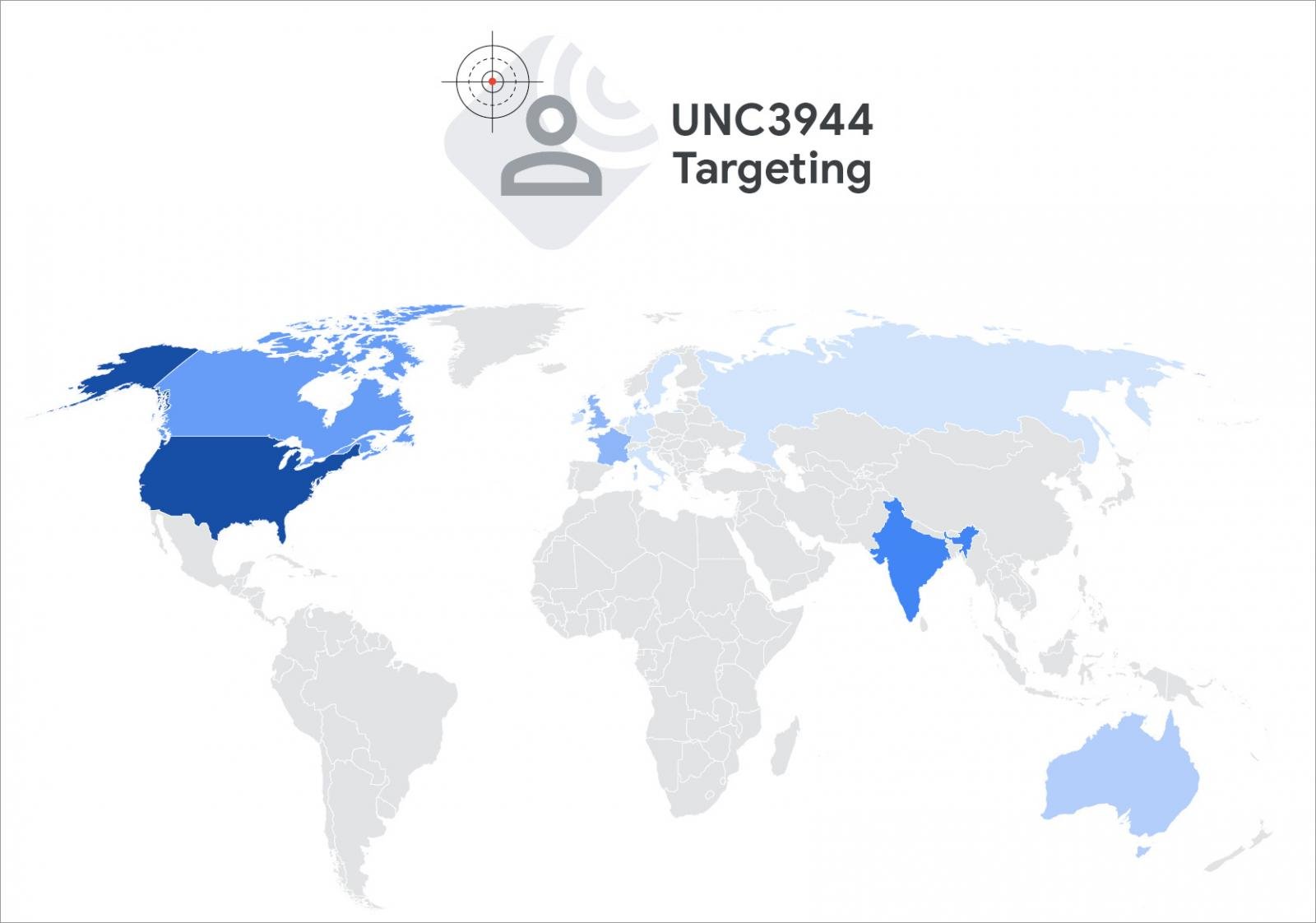
Scattered Spider presenceSource: Mandiant -
Use of predominantly identity-based tactics, techniques and procedures (TTPs) specialising in phishing, credential attacks, help desk scams/vishing, SIM swapping, smishing, etc. — all designed to achieve account takeover.
-
Cloud-conscious techniques, such as targeting modern cloud identity provider accounts such as Okta and Microsoft Entra, and abusing cloud services and environments.
When we think of Scattered Spider, we think of the quintessential cloud-native attacker who has grown up in the modern era of computing and internet services where being a hacker is less about network exploits than it is about logging into accounts on apps and services. These are people who probably cut their teeth in credit card scams and other forms of internet fraud rather than trawling the internet for exposed servers and open ports.
So they’re identity-first, but more important than that, they’re flexible and adaptable. They’re also willing to go after any and every company that presents an opportunity.
Learn about Scattered Spider’s evolving TTPs and how to defend your organization
Scattered Spider has dominated the news in recent weeks following high-profile breaches impacting UK retailers. But with a long history of high-profile ransomware attacks, this is just one example of their identity-based approach.
Join Push Security as they go beyond the breaches and learn how to defend your organization against Scattered Spider’s growing arsenal of TTPs.
Watch the webinar on-demand2. Help desk scams aren’t new
The headline story from the recent campaign against UK retailers is the use of help desk scams. This typically involves the attacker calling up a company’s help desk with some level of information — at minimum, PII that allows them to impersonate their victim, and sometimes a password, leaning heavily on their native English-speaking abilities to trick the help desk operator into giving them access to a user account.
How it works
The goal of a help desk scam is to get the help desk operator to reset the credentials and/or MFA used to access an account so the attacker can take control of it. They’ll use a variety of backstories and tactics to get that done, but most of the time it’s as simple as saying “I’ve got a new phone, can you remove my existing MFA and allow me to enroll a new one?”
From there, the attacker is then sent an MFA reset link via email or SMS. Usually, this would be sent to, for example, a number on file — but at this point, the attacker has already established trust and bypassed the help desk process to a degree. So asking “can you send it to this email address” or “I’ve actually got a new number too, can you send it to…” gets this sent directly to the attacker.
At this point, it’s simply a case of using the self service password reset functionality for Okta or Entra (which you can get around because you now have the MFA factor to verify yourself) and voila, the attacker has taken control of the account.
And the best part? Most help desks have the same process for every account — it doesn’t matter who you’re impersonating or which account you’re trying to reset. So, attackers are specifically targeting accounts likely to have top tier admin privileges — meaning once they get in, progressing the attack is trivial and much of the typical privilege escalation and lateral movement is removed from the attack path.
So, help desk scams have proved to be a reliable way of bypassing MFA and achieving account takeover — the foothold from which to launch the rest of an attack, such as stealing data, deploying ransomware, etc.
This isn’t their first rodeo
But something that’s not quite coming across in the reporting is that Scattered Spider have been doing this successfully since 2022, with the M&S and Co-op attacks merely the tip of the iceberg. Vishing (calling a user to get them to give up their MFA code) has been a part of their toolkit since the beginning, with the early attacks on Twilio, LastPass, Riot Games, and Coinbase involving some form of voice-based social engineering.
Notably, the high-profile attacks on Caesars, MGM Resorts, and Transport for London all involved calling a help desk to reset credentials as the initial access vector.
-
Caesars in August 2023 where hackers impersonated an IT user and convinced an outsourced help desk to reset credentials, after which the attacker stole the customer loyalty program database and secured a $15m ransom payment.
-
MGM Resorts in September 2023, where the hacker used LinkedIn information to impersonate an employee and reset the employee’s credentials, resulting in a 6TB data theft. After MGM refused to pay, the attack eventually resulted in a 36-hour outage, a $100m hit, and a class-action lawsuit settled for $45m.
-
Transport for London in September 2024 resulted in 5,000 users’ bank details exposed, 30,000 staff required to attend in-person appointments to verify their identities and reset passwords, and significant disruption to online services lasting for months.
So not only have Scattered Spider been using these techniques for some time, but the severity and impact of these attacks has been ramping up.
Avoiding help desk gotchas
There’s lots of advice for securing help desks being circulated, but much of the advice still results in a process that is either phishable or difficult to implement.
Ultimately, organizations need to be prepared to introduce friction to their help desk process and either delay or deny requests in situations where there’s significant risk. So, for example, having a process for MFA reset that recognizes the risk associated with resetting a high-privileged account:
-
Require multi-party approval / escalation for admin-level account resets
-
Require in-person verification if the process can’t be followed remotely
-
Freeze self-service resets when suspicious behavior is encountered (this would require some kind of internal process and awareness training to raise the alarm if an attack is suspected)
And watch out for these gotchas:
-
If you receive a call, good practice is to terminate the call and dial the number on file for the employee. But, in a world of SIM swapping, this isn’t a foolproof solution — you could just be re-dialing the attacker.
-
If your solution is to get the employee on camera, increasingly sophisticated deepfakes can thwart this approach.
But, help desks are a target for a reason. They’re “helpful” by nature. This is usually reflected in how they’re operated and performance measured — delays won’t help you to hit those SLAs! Ultimately, a process only works if employees are willing to adhere to it — and can’t be socially engineered to break it.
Help desks that are removed from day-to-day operations (especially when outsourced or offshored) are also inherently susceptible to attacks where employees are impersonated.
But, the attacks we’re experiencing at the moment should give security stakeholders plenty of ammunition as to why help desk reforms are vital to securing the business (and what can happen if you don’t make changes).
3. Scattered Spider don’t just do help desk scams
All that said, there’s a bigger picture here — help desk scams aren’t the only tool in the Scattered Spider toolkit.
They’ve consistently used a range of techniques, with a particular affinity for SIM swapping, smishing, and even basic credential phishing (usually targeted at Okta accounts).
And this year, security researchers have observed Scattered Spider increasingly using Attacker-in-the-Middle (AiTM) phishing toolkits to bypass MFA.
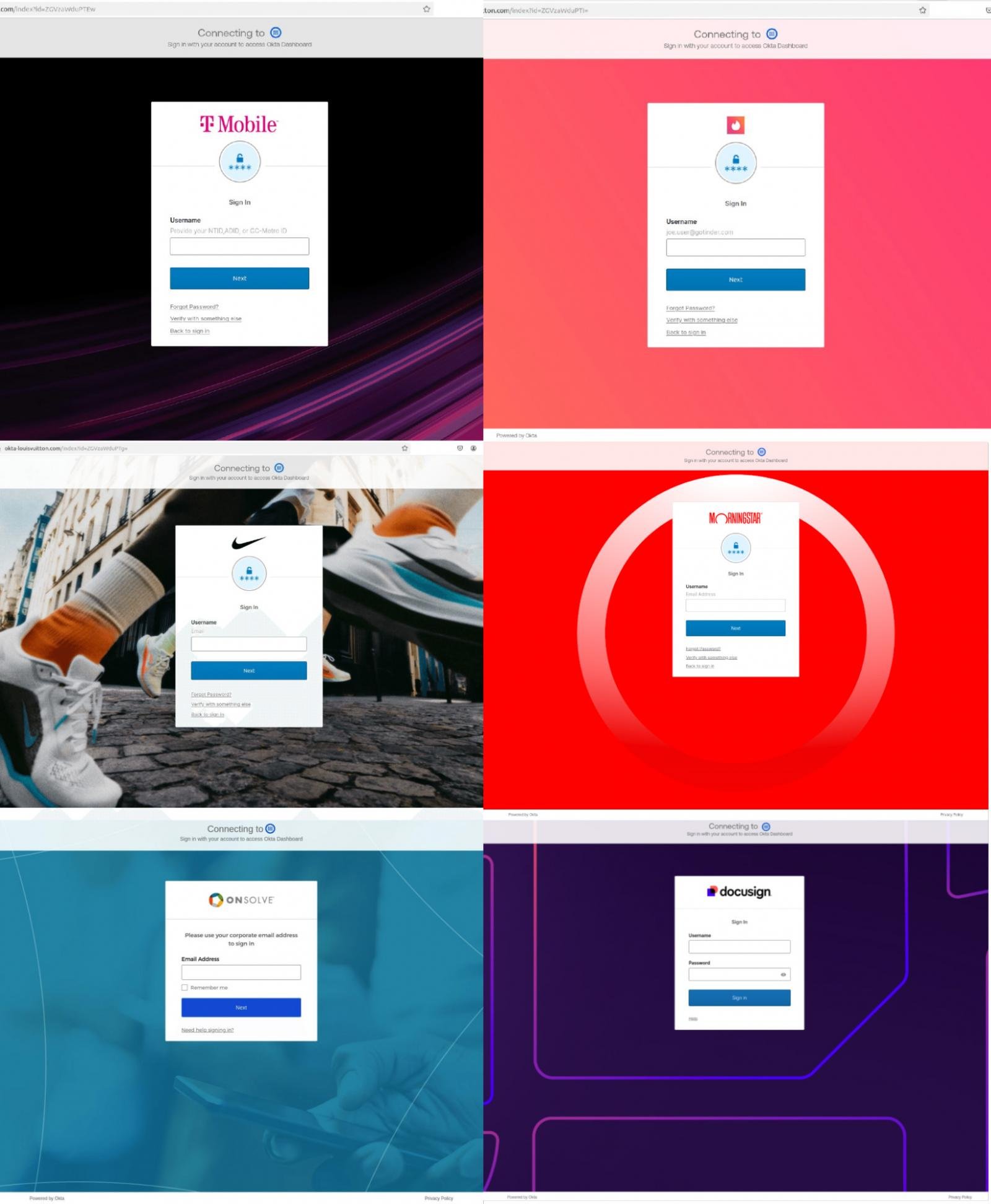
This is very much on-brand for Scattered Spider. They exclusively use identity-based methods for their initial intrusions, all of which are designed to bypass MFA and achieve account takeover.
Their attacks are usually very direct. Scattered Spider tend to go straight for accounts that have elevated permissions, enabling them to quickly progress their attack.
For example, in the 2023 MGM attack, the attacker directly accessed an account with Super Admin permissions in Okta, which they combined with an inbound federation attack to impersonate any user in the tenant, get Azure admin privileges, and authenticate to the Azure-hosted VMware environment where they deployed ransomware.
They’ve also demonstrated that they are specifically targeting VMware servers as their target for ransomware deployment/encryption, noted in the MGM and M&S attacks. By targeting the VMware hypervisor (usually by adding their compromised identity to the Admins group in VCentre), they’re able to consciously evade endpoint-level controls running on the virtual machines themselves, such as EDR.
Particularly if we consider the bigger picture with adjacent groups like ShinyHunters, who were behind the Snowflake attacks in 2024, and the severity of their attacks, we can see similar goals but different ways of achieving those goals.
The Snowflake attacks leveraged stolen credentials from prior infostealer infections dating back to 2021 to log into accounts without MFA (with widespread MFA gaps a big problem due to the nature of Snowflake identity management at the time), resulting in hundreds of millions of breached records across 165 victims.
You can also look at groups like Lapsus$, who’ve demonstrated strikingly similar techniques in the past too.
So in summary, Scattered Spider uses a range of identity-based techniques to take over privileged accounts for their initial intrusion, all of which are designed to bypass MFA. They aren’t wedded to any specific technique though, and will use whatever means necessary within that identity-based framework to get the job done.
Conclusion
You can think of Scattered Spider as a kind of “post-MFA” threat actor that does everything they can to evade established security controls.
By targeting identities and account takeovers, they bypass endpoint and network surfaces as much as possible, until the very end of the attack chain — by which point it’s almost too late to be relying on those controls.
So, don’t over-index on help desk scams — you need to consider your broader identity attack surface and various intrusion methods, from apps and accounts with MFA gaps, local accounts giving attackers a backdoor into accounts otherwise accessed with SSO, and MFA-bypassing AiTM phishing kits that are the new normal for phishing attacks.
Want to know more about Scattered Spider?
Watch this on-demand webinar from researchers at Push Security to learn more about Scattered Spider’s TTP evolution and what you can do to defend your organization.
Learn how Push Security stops identity attacks
Push Security provides comprehensive identity attack detection and response capabilities against techniques like AiTM phishing, credential stuffing, password spraying and session hijacking using stolen session tokens. You can also use Push to find and fix identity vulnerabilities across every app that your employees use, like: ghost logins; SSO coverage gaps; MFA gaps; weak, breached and reused passwords; risky OAuth integrations; and more.
If you want to learn more about how Push helps you to detect and defeat common identity attack techniques, book some time with one of our team for a live demo.
Sponsored and written by Push Security.
Scattered Spider: Understanding Help Desk Scams and How to Defend Your Organization
CISA warns of ConnectWise ScreenConnect bug exploited in attacks
Free online web security scanner

